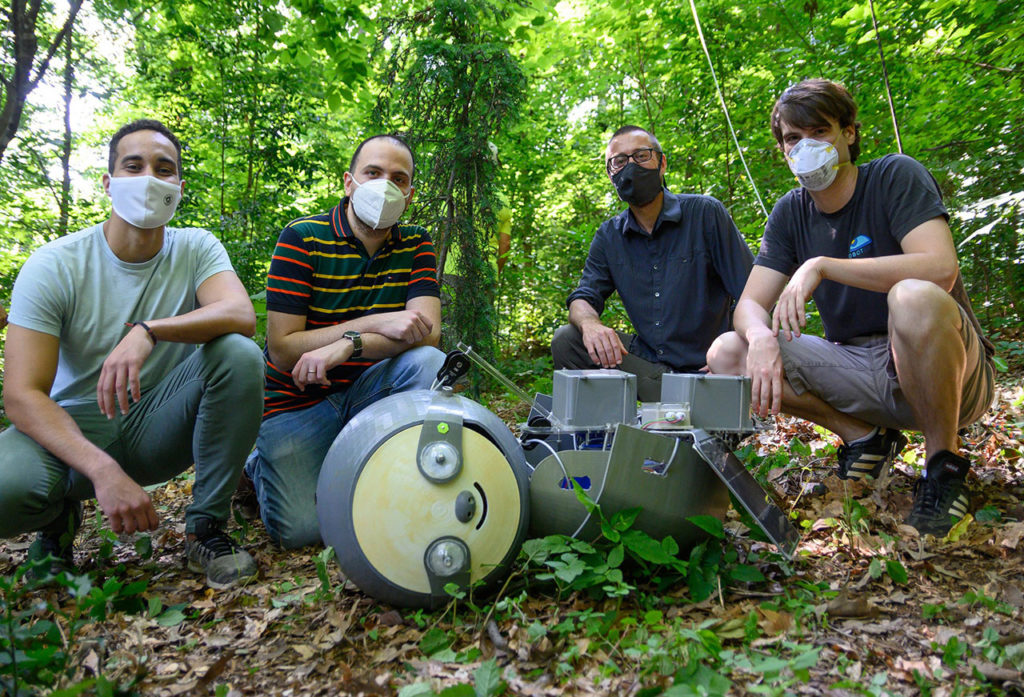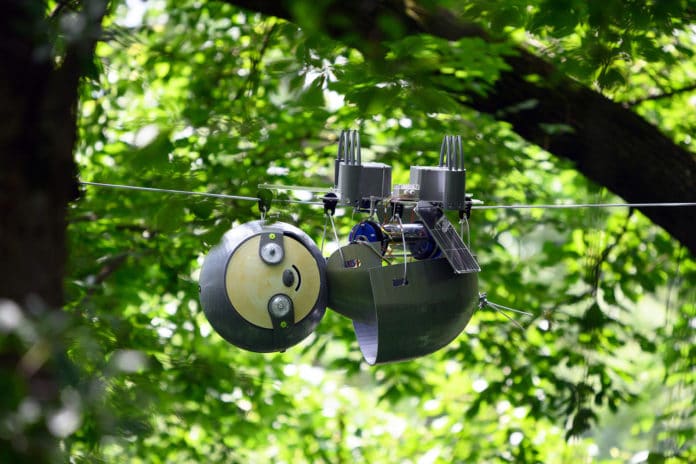Most animal-inspired robots are designed to move faster, but Georgia’s latest technology is exactly the opposite. The newly designed SlothBot is a slow-moving and energy-efficient robot that can linger in the trees to monitor animals, plants, and the environment below.
Engineers decided to take advantage of the low-energy lifestyle of the sloths. Sloths only move in slow motion and save energy by hanging most of its life almost motionless on a branch. Developed by robotics engineers at the Georgia Institute of Technology, SlothBot demonstrates how slowness can be ideal for certain situations.
SlothBot robots will be tested in the Atlanta Botanical Garden. It will lead to the same life as a real sloth. This, first of all, means that SlothBot is a very energy-efficient robot. It is powered by solar panels, and also uses special energy management technology. The hyper-efficient conservation Robot will move along a cable stretched between two large trees and monitor the temperature, weather, carbon dioxide level in the air, and other information.

Credits: Georgia Tech
About three feet long, the SlothBot’ whimsical 3D-printed shell helps protect its motors, gearboxes, batteries, and sensing equipment from the weather. The robot is programmed to move only when necessary and will determine the location of sunlight when its batteries need recharging. In the Atlantic Botanical Gardens, SlothBot will operate on a single 100-foot cable, but in larger environmental conditions, it will be able to switch from cable to cable to cover a larger area.
Over the next few months, visitors to the Canopy Walk of the Atlantic Botanical Gardens will be able to watch the testing of a new high-tech tool in the battle to save some of the world’s most endangered species.
By being slow and energy-efficient, SlothBot can stay in an environment for months and even years and observe things that only become apparent through such continuous observation. In general, the robot will help scientists understand what can affect biodiversity reduction. This knowledge can be applied to preserve endangered species.
“The most exciting goal we’ll demonstrate with SlothBot is the union of robotics and technology with conservation,” said Emily Coffey, vice president for conservation and research at the Garden. “We do conservation research on imperiled plants and ecosystems around the world, and SlothBot will help us find new and exciting ways to advance our research and conservation goals.”
In addition to conservation, SlothBot could have applications for precision agriculture, where the robot’s camera and other sensors traveling in overhead wires could provide early detection of crop diseases, measure humidity, and watch for insect infestation.
